
Five-Hundred-Year-Journey
Alexander Poltorak Abstract This essay addresses the anigmatic statement of the Jewish Sages, stating that G-d created this world with the letter Heh and the

Alexander Poltorak Abstract This essay addresses the anigmatic statement of the Jewish Sages, stating that G-d created this world with the letter Heh and the
By Alexander Poltorak Introduction In the first installment of this essay, “Collapsing the Wave Function of Urim and Thummim,”[1] we discussed the inherent duality of
By Alexander Poltorak Abstract This essay explores the profound connections between the biblical laws of tzaraath (Leviticus 13-14) and modern concepts of entropy and the
By Alexander Poltorak Abstract The Torah portion of Shemini records the climactic eighth day of the Tabernacle’s dedication, the moment when divine fire finally descends.
By Alexander Poltorak “G‑d is a mathematician”Carl Friedrich Gauss I. Can We Prove that G-d created Axioms of mathematics? 1. Introduction A reader challenged me with a
And it came to pass, when he was come near to enter into Egypt, that he said unto Sarai his wife: “Behold now, I know
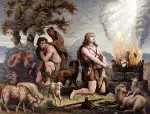
In his commentary on this week’s Torah Portion, Yitro, Rabbi Chayim Vital, writing in the name of his teacher, the Ari-zal, states that Abel was
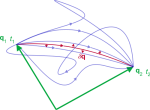
The spectacle of the universe becomes so much the grander, so much more beautiful, the worthier of its Author, when one knows that a small

And for the unclean they shall take of the ashes of the burning of the purification from sin, and running water shall be put thereto
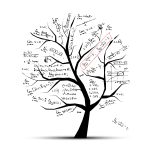
To Mendel Almost three years ago, in December of 2019, I posted an essay, “The Tree of Knowledge as a Metaphor for Superposition of States
In the six hundredth year of Noah’s life, in the second month, on the seventeenth day of the month, on the same day were all

And G‑d created man in His own image, in the image of G‑d created He him; male and female created He them. And G‑d blessed
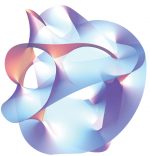
And they made their lives bitter with hard service, in mortar and in brick… Exodus 1:14 On a literal level, the Egyptian exile (Galut Mitzrayim)

A light shalt thou make to the ark…with lower, second, and third stories shalt thou make it. (Genesis 6:16) We mentioned in the previous posts
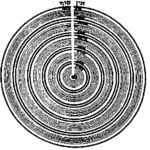
Sweeping Infinities Under the Rug—or Renormalization Having dealt with internal contradictions in the previous section (see Physics of Tzimtzum I — The Quantum Leap and

Introduction “In the beginning G‑d created the heavens and the earth.” (Genesis 1:1) “In the beginning G‑d created the heavens and the earth,” the Torah
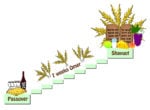
There is a Biblical Commandment to count the days between the Passover and Shavuot, the “Feast of Weeks” (a.k.a. Pentecost). We start counting on the
It is related that on the day that Rabbi Yehuda HaNasi died, the Sages decreed a fast, and begged for divine mercy so that he
And the messengers returned to Jacob, saying: “We came to thy brother Esau, and moreover he cometh to meet thee, and four hundred men with

Meditations on the Maaseh Merkavah – IV This is the fourth and the final installment in the series of posts related to Ezekiel’s prophesy, Ma’aseh

Meditations on the Maaseh Merkavah – II This post is a sequel to my previous post, “Space – Between Future and Past.” For background information,
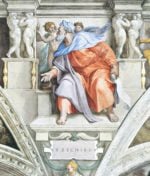
Meditations on the Maaseh Merkavah – I We do science by studying nature. We study physics in a lab, peering into space or working out
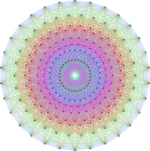
The Special Theory of Relativity, published by Albert Einstein in 1905, was a game changer. It ushered the era of new physics dubbed by some
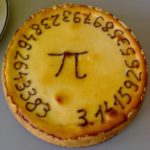
March 14 is celebrated by nerds around the world as the Pi Day. When written in digits, 3/14 represents first three digits of the number
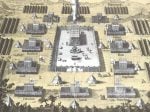
Vectors, Spins, and Gender Speak to the children of Israel, and have them take for Me an offering; from every person whose heart inspires him

When thou shalt besiege a city a long time, in making war against it to take it, thou shalt not destroy the trees thereof by

And the messengers returned to Jacob, saying: “We came to thy brother Esau, and moreover he cometh to meet thee, and four hundred men with
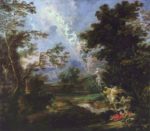
November 19, 2018 And he [Jacob] dreamed, and behold! a ladder set up on the ground and its top reached to heaven; and behold, angels

Yesterday was the 9th day of the month of Av or, in Hebrew, Tisha B’Av. Usually, Tisha B’Av is marked by mourning and fasting. Yesterday,

Why is this night different from all other nights, asks a child on the Seder night. On this Simchat Torah I asked a different question—why
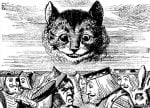
In memory of my father, Abraham Shamshin ben Reuven, ע”ה For those of us who can’t get enough of Schrödinger cat, comes a new
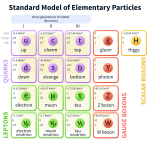
Ye are standing this day all of you before the Lord your G‑d: your heads, your tribes, your elders, and your officers, even all the
In the Torah portion Emor (Leviticus 21:1–24:23), we are instructed to abstain from work every seventh day on Shabbat. Next week’s Torah portion, Behar, continues

I grew up in Russia and was raised on the metric system based on decimal arithmetic. When we immigrated to the U.S., I had to

In the Torah portion Tazriah (Leviticus 13), the Schrödinger cat[1] gets leprosy. Well, it’s not really leprosy, it’s a mysterious supernatural disease called tzara’as, nowadays translated